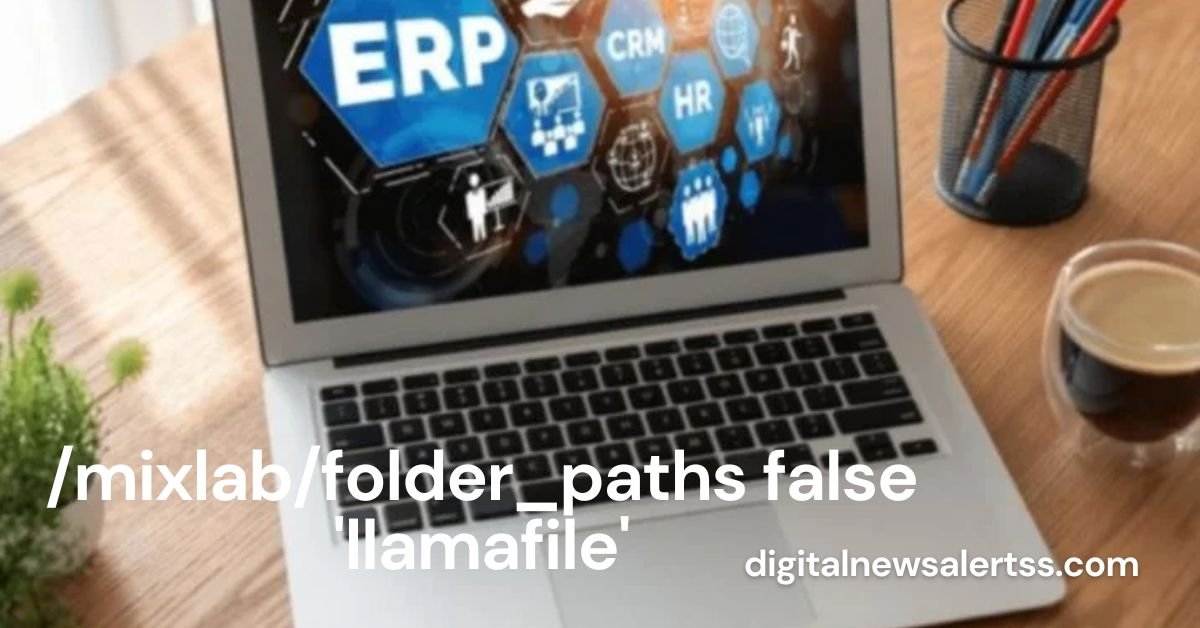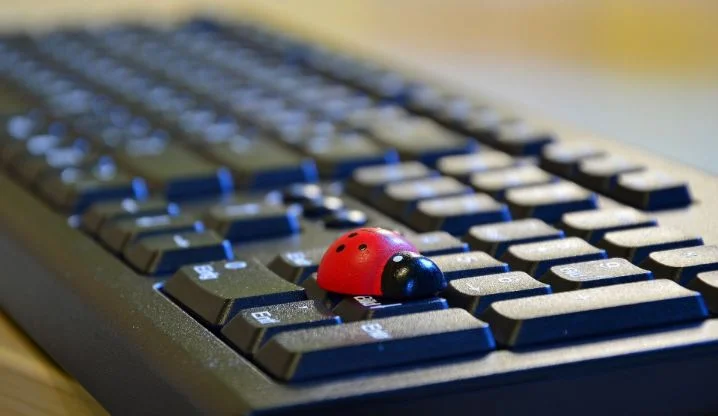Understanding /mixlab/folder_paths false ‘llamafile’ is essential for efficient project management, particularly when dealing with the Llamafile system. Whether you’re a creative producer or a technical user, optimizing folder paths streamlines your workflow and reduces the risk of errors in project organization. In this guide, we’ll walk through the basics of folder paths, the importance of structured file management, and how the Llamafile system works in MixLab.
MixLab, known for its intuitive digital production tools, relies heavily on a logical file path structure to manage various media files efficiently. This is where the Llamafile system comes into play, helping users better handle complex projects by organizing assets neatly. Below, we’ll explore each component in detail, highlighting the advantages of proper folder path usage and offering actionable tips for making the most out of the Llamafile system.
What is MixLab and Why Are Folder Paths Important?
MixLab is a digital production software that enables creators, musicians, and sound engineers to manage and organize audio, video, and other creative projects. One of the key elements of MixLab’s framework is folder path management. A folder path refers to the hierarchical location of files and folders on your system, which dictates how assets are stored and retrieved during the creative process.
Efficient folder path management ensures that files remain organized, are easy to locate, and prevent time-consuming searches for missing or misplaced assets. Poor file organization can lead to inefficiencies, such as errors when loading projects or unnecessary duplication of files, which can ultimately slow down production.
Understanding the Llamafile System in MixLab
Llamafile is a unique component within MixLab, designed to handle the organization and referencing of assets within projects. The Llamafile system creates a structure that automatically manages folder paths and file associations, making it easier for users to store, access, and link media files during their creative workflow.
The system functions by assigning metadata to each file, which helps the software identify where each asset is located and how it should be used within a project. This reduces the complexity of managing large volumes of media files and ensures that all references to files remain intact, even if the original file location changes.
Why Should You Care About Folder Paths and Llamafile?
Many users underestimate the importance of folder paths and how much impact proper organization has on project efficiency. With complex projects, particularly those involving multiple contributors, poorly organized folder paths can result in:
- Lost Files: Misplaced files due to improper path management can delay project completion.
- Broken Links: Incorrect folder paths can break the connections between media files and the project, leading to additional work to relink everything.
- Confusion in Collaboration: When working with teams, inconsistent folder paths make collaboration difficult, as different users may not know where specific files are stored.
Llamafile simplifies this process by automating how MixLab handles file references and folder paths. It acts as a central hub that tracks the location and use of each file, regardless of where it is stored on your system.
How to Set Up Folder Paths in MixLab with Llamafile
Setting up folder paths correctly in /mixlab/folder_paths false ‘llamafile’ can dramatically improve your workflow. To optimize folder management, it’s essential to establish a consistent and logical folder structure at the outset of every project.
Here are the steps to get started:
1. Create a Dedicated Project Folder
Before you even begin working on your project, create a dedicated folder that will house all related assets. Inside this folder, organize subfolders for different types of media files (e.g., audio, video, images, and documents). This prevents /mixlab/folder_paths false ‘llamafile’from searching through random locations across your hard drive and ensures that all project files are centralized.
2. Use the Llamafile System to Track Media Files
Once your folder structure is established, Llamafile will take over, indexing each file and managing how MixLab references them. Make sure to save any new media assets in the correct folders.
3. Regularly Backup Your Project Files
To prevent any potential data loss, it’s important to regularly back up your project files. Llamafile’s robust tracking ensures that even if you restore your files from a backup, the paths and file references will remain intact, preventing broken links.
4. Stay Consistent with File Naming Conventions
Consistency is key when working with folder paths. Always name your files and folders clearly and logically. For example, prefix audio files with a clear identifier (e.g., “mix-01_intro.wav”) to avoid confusion, especially when working in large projects.
Best Practices for Managing Folder Paths in MixLab
To optimize the use of folder paths in MixLab and ensure the Llamafile system works smoothly, follow these best practices:
- Plan Your Folder Structure in Advance: Before beginning any project, take a few minutes to plan out how you want to organize your files. Having a well-thought-out structure will save time in the long run.
- Avoid Duplicate Files: If you need to use the same asset in multiple locations, use symbolic links or shortcuts instead of duplicating the file. This will keep your project size manageable and avoid potential issues with file updates.
- Regularly Update File References: If you move or rename files outside of MixLab, ensure that you update the file references in Llamafile to avoid broken links.
The Advantages of Using Llamafile in Complex Projects
The Llamafile system is particularly advantageous for complex projects involving multiple media types or large teams of collaborators. Its automated indexing and metadata assignment capabilities reduce the workload associated with managing folder paths manually. This not only increases project efficiency but also minimizes the risk of human error.
Llamafile’s ability to keep track of files regardless of their physical location allows users to focus on the creative aspects of their work rather than worrying about file management. This is especially useful in large-scale productions where numerous assets are scattered across various folders and storage devices.
Common Challenges When Using Llamafile and How to Overcome Them
Despite its advantages, there are some common challenges users might face when working with /mixlab/folder_paths false ‘llamafile’:
- File Corruption: If a media file becomes corrupted, Llamafile may be unable to reference it properly. To avoid this, always back up your files and use reliable storage solutions.
- Folder Path Errors: Occasionally, MixLab might have trouble locating files due to changes in folder structure.
- Collaborative Work Conflicts: When working with multiple collaborators, ensure that everyone adheres to the same folder path and file management conventions to avoid conflicts.
Llamafile: A Game-Changer in Folder Path Management
MixLab’s Llamafile system has proven to be a game-changer for professionals who need to keep track of large volumes of media files. It ensures that folder paths remain organized, easy to navigate, and free from errors that could disrupt the production process.
Whether you’re a solo creator or part of a larger team, mastering folder paths with Llamafile will save you time and energy. By automating the process of file management, /mixlab/folder_paths false ‘llamafile’ empowers users to focus on what truly matters: creating high-quality content.
Conclusion
/mixlab/folder_paths false ‘llamafile’ management, combined with the innovative Llamafile system, offers users a streamlined and efficient way to manage their media files. Whether you’re working on small projects or large-scale productions, proper folder path organization will enhance your workflow, prevent errors, and ensure that your creative process remains smooth and uninterrupted. Llamafile’s automated file referencing and metadata management are invaluable tools for anyone serious about maintaining a clean and efficient project structure in MixLab.
FAQs
What is the purpose of folder paths in MixLab?
Folder paths help users organize and locate their project files efficiently. They are essential for keeping track of media assets and ensuring smooth workflow management in MixLab.
How does the Llamafile system work in MixLab?
Llamafile automates the process of indexing and tracking file paths. It assigns metadata to files, which helps MixLab reference them correctly, even if their physical location changes.
Can I move my files without breaking the folder paths in MixLab?
Yes, thanks to the Llamafile system. If you move or rename files, Llamafile will update its internal references automatically, ensuring that MixLab can still access the files.
How do I prevent broken links in MixLab?
To prevent broken links, always use the Llamafile system to manage file paths and avoid manually moving or renaming files without updating their references in the project.
What should I do if a file becomes corrupted in MixLab?
If a file is corrupted, replace it with a backup version if available. Regularly backing up your files can help avoid issues related to file corruption.
Is the Llamafile system necessary for small projects?
While smaller projects may not require the full capabilities of Llamafile, it can still be useful for keeping track of media files and ensuring consistency throughout the production process.











